Native Perceptions of IHS
Mission Statement | Background | Contemporary Issues | Cultural Sensitivities | Bibliography | About Us
Home > Background > Native Perceptions of IHS
Native Perceptions of IHS
It is widely perceived in Native communities that the formation of the IHS was not initially in service of Native communities, rather in support of federal interest in gathering mortality data on these communities in order to assess what was perceived as a looming financial burden for the U.S. government. After a shift towards providing comprehensive medical care to combat growing epidemics in diabetes, alcoholism, STIs, and other conditions, government efforts have remained relatively minimal.
At present, numerous barriers to care for Native users of the IHS system exist, many of them rooted in patients’ perception of IHS providers. The system is considered poorly funded, ill-equipped, and prone to discriminatory practices such as racial and ethnic bias and stereotyping. Furthermore, it has yet to develop a fully functional system of reporting for instances of discrimination, disservice, or abuse. More recently, Native communities have begun voicing their concerns regarding the low percentage of Native practitioners as compared to non-Native practitioners employed in IHS settings, particularly considering that the IHS has yet to implement a standardized system of cultural sensitivity training for its staff members.
Sentiments such as those described above, as well as problems with trust, treatment uptake, and care utilization are certainly not universal, however one is not unlikely to encounter them. They are important to keep in mind when entering the clinical space as a non-Native practitioner. Where possible, the practitioner should seek to fill in their personal practice the needs unmet by the system.
References
1. Haverkate, Rick (2010). “Health Care Beliefs and Practices Among Native American Patients.” National Indian Health Board, Washington, D.C.
2. Hendrix, Levanne R. “Health and Health Care of American Indian and Alaska Native Elders.” Ethnogeriatric Curriculum Module, Stanford University.
3. Reimer, Toni-Tripp et al. (2001). “Cultural Barriers to Care: Inverting the Problem.” Diabetes Spectrum, The American Diabetes Association 14(1): 13-22
4. U.S. Commission on Civil Rights (2004). “Broken Promises: Evaluating the Native American Health Care System.”


